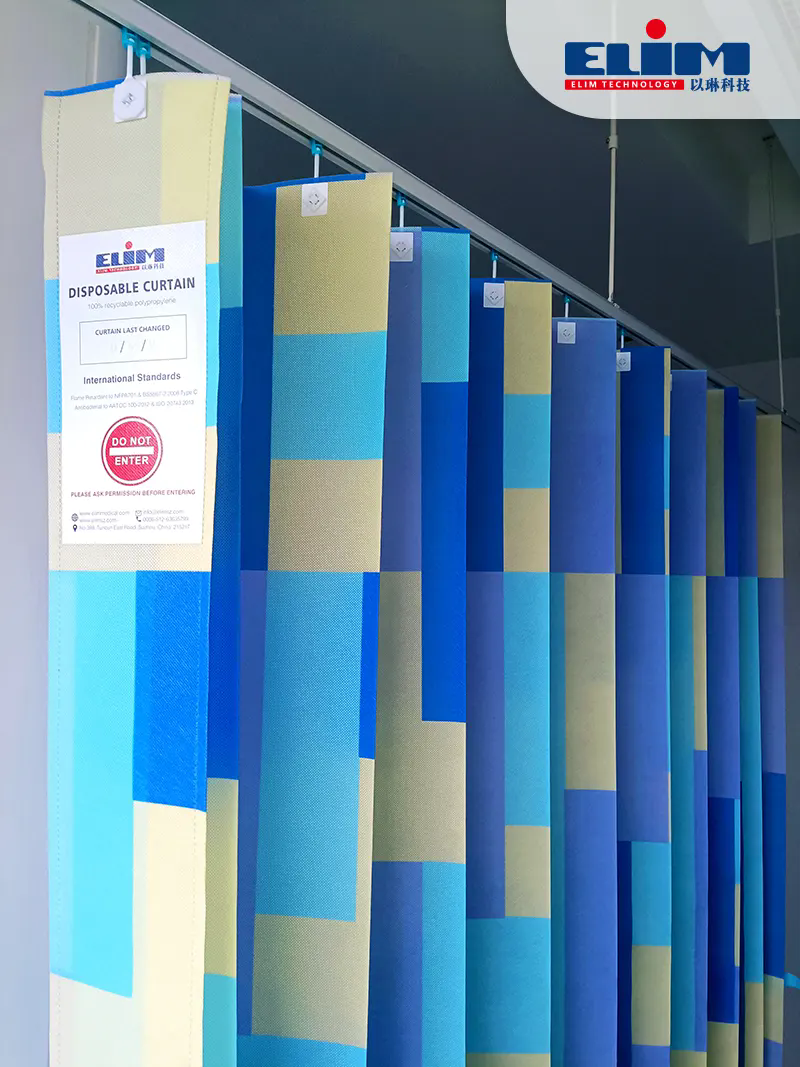The Benefits of Disposable Curtains: A Practical Solution for Cleanliness and Convenience
2025-01-04
In today’s fast-paced world, cleanliness, convenience, and hygiene are more important than ever, especially in environments like hospitals, clinics, hotels, and even at home. While traditional curtains are a staple in many spaces, they can sometimes pose challenges when it comes to keeping them clean, especially in high-traffic areas. This is where disposable curtains come in—offering an innovative and practical solution for those seeking hygiene, ease of use, and affordability.
In this blog, we will explore the growing popularity of disposable curtains, their benefits, and the reasons why they are becoming a go-to option in various sectors.
What are Disposable Curtains?
As the name suggests, disposable curtains are curtains designed for single-use or short-term use. These curtains are typically made from lightweight, durable materials such as non-woven fabrics or polyethylene, and they are intended to be replaced after a certain period or once they are soiled. Unlike traditional curtains, which require washing and maintenance, disposable curtains are designed for quick and easy removal, making them ideal for high-turnover environments where hygiene and convenience are top priorities.
Key Benefits of Disposable Curtains
1. Enhanced Hygiene and Cleanliness
One of the main advantages of disposable curtains is their ability to promote superior hygiene. In environments like hospitals, medical clinics, or dental offices, cleanliness is a top priority to prevent the spread of infections. Traditional curtains can accumulate dust, bacteria, and allergens over time, posing a potential risk to patients and staff. Disposable curtains, on the other hand, are used for a set period and then replaced, ensuring that a clean curtain is always in place.
In high-risk environments where infection control is essential, disposable curtains provide a level of sanitation that traditional curtains may not offer. They are designed to be easily disposed of and replaced, ensuring that the space remains as hygienic as possible.
2. Convenience and Time-Saving
Washing curtains can be time-consuming, labor-intensive, and costly, especially for large areas such as hospital wards or hotel rooms. Disposable curtains eliminate the need for frequent cleaning, saving valuable time and labor. In addition, there’s no need to worry about removing, washing, or ironing the curtains—simply remove the used curtain and replace it with a fresh one. This makes disposable curtains an excellent solution for environments where turnaround time is critical, such as in hospitals, airports, or temporary accommodations.
The ease of use also extends to the installation process. Disposable curtains typically come in pre-measured sizes and are designed to be easily mounted or hung with minimal effort, further enhancing their convenience.
3. Cost-Effectiveness
While disposable curtains may have a higher upfront cost compared to traditional curtains, they can save money in the long run by eliminating the need for professional cleaning services and reducing labor costs. In commercial settings where curtains need to be replaced frequently, such as in hotels or healthcare facilities, disposable curtains can offer significant cost savings. Additionally, the cost of maintaining and repairing traditional curtains—such as washing, repairing, or replacing damaged fabrics—can quickly add up, whereas disposable curtains are a one-time cost.
4. Reduced Risk of Cross-Contamination
In hospitals, clinics, and other healthcare settings, the risk of cross-contamination is a serious concern. Traditional curtains, particularly those used in patient rooms, can harbor pathogens, bacteria, and viruses. This makes thorough cleaning a priority, but it’s not always foolproof. Disposable curtains offer an added layer of security by being replaced regularly, ensuring that the risk of cross-contamination is minimized. Each new curtain provides a completely clean surface, preventing the transfer of harmful microorganisms from one patient to another.
5. Variety of Applications
Although disposable curtains are commonly used in medical environments, their applications extend far beyond that. Here are some other areas where disposable curtains are becoming increasingly popular:
- Hotels and Guest Rooms: In the hospitality industry, cleanliness is paramount. Disposable curtains can help maintain high standards of hygiene, particularly in high-turnover rooms where regular washing is impractical. They can be easily changed between guest stays, ensuring that each guest enjoys a fresh and clean room.
- Event Spaces and Temporary Installations: For trade shows, conventions, or temporary partitions at events, disposable curtains provide a quick and efficient way to create privacy or divide spaces without the need for permanent installations.
- Industrial and Laboratory Settings: In factories or laboratories where contamination control is necessary, disposable curtains can be used to create clean rooms or divide areas to maintain separation between controlled and uncontrolled environments.
- Home Use: Disposable curtains can also be useful in residential settings, especially for temporary purposes such as during renovations, moving, or as a protective layer in places like garages or utility rooms.
6. Environmentally Friendly Options
Although disposable items often carry the stigma of being wasteful, many manufacturers are now producing eco-friendly disposable curtains. These curtains are made from biodegradable or recyclable materials, ensuring that they have a minimal impact on the environment. Additionally, many disposable curtains are designed to be durable and long-lasting, so they don’t need to be replaced as frequently as one might think.
How to Choose the Right Disposable Curtain
When selecting disposable curtains, it’s essential to consider several factors to ensure you’re choosing the right product for your needs:
- Material: Look for curtains made from high-quality, non-woven fabrics that are durable and resistant to tears. Some disposable curtains are also designed to be water-resistant or antimicrobial, offering additional protection.
- Size and Fit: Make sure to choose a curtain that fits the dimensions of the area you need to cover. Disposable curtains often come in standard sizes, but custom options may be available for more specialized needs.
- Ease of Installation: Choose a curtain that’s easy to install and remove, especially if you’ll be replacing them frequently. Many disposable curtains come with built-in grommets or hooks for quick setup.
- Hygiene Certifications: For medical or industrial applications, make sure the disposable curtains meet industry standards for hygiene and safety.
Conclusion
Disposable curtains provide a practical and effective solution for environments where hygiene, convenience, and cost-efficiency are top priorities. Whether in hospitals, hotels, event spaces, or industrial settings, these curtains offer enhanced cleanliness, reduce the risk of contamination, and save time and labor costs associated with traditional fabric curtains. As industries and consumers continue to prioritize cleanliness and convenience, disposable curtains are likely to become an even more integral part of our daily lives.



